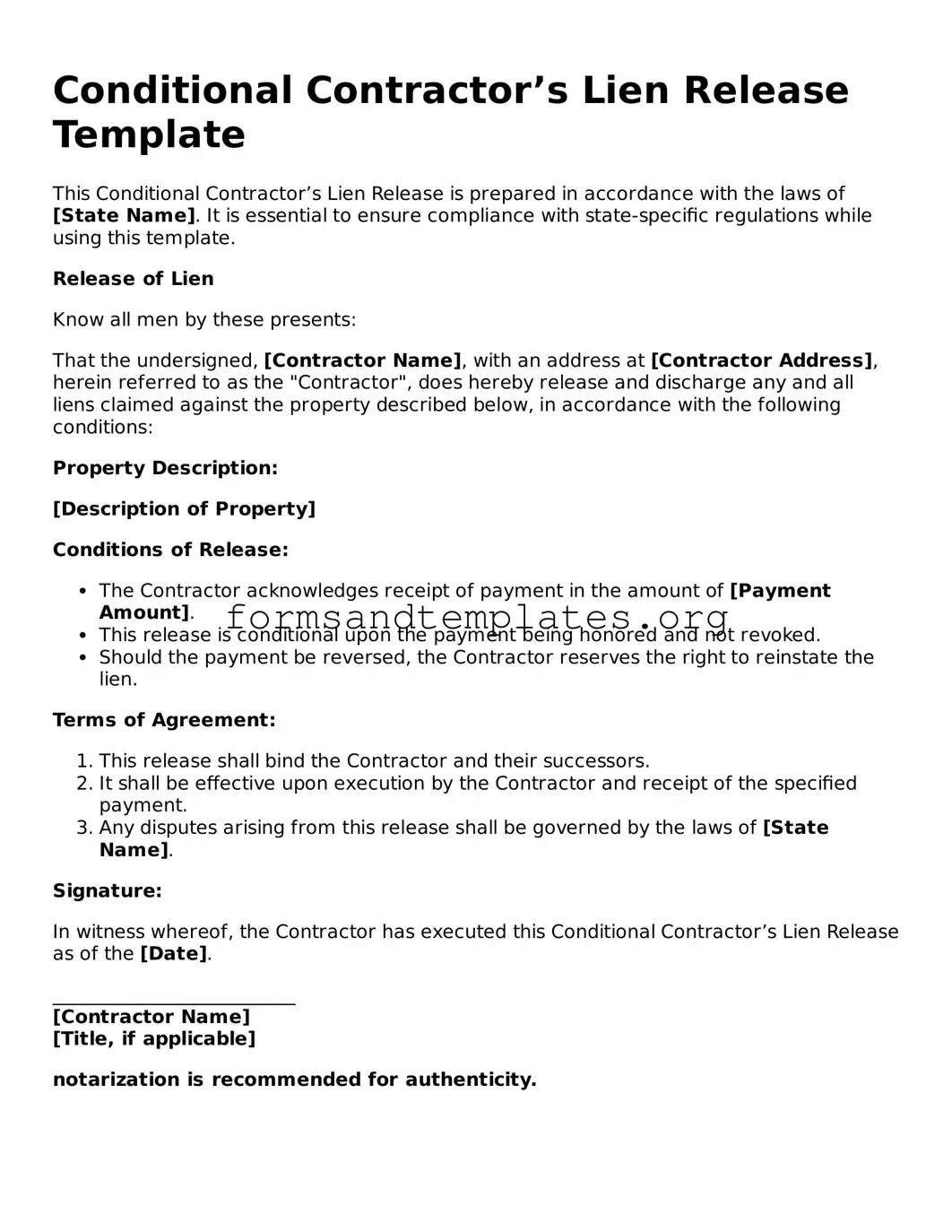Conditional Contractor’s Lien Release Template
This Conditional Contractor’s Lien Release is prepared in accordance with the laws of [State Name]. It is essential to ensure compliance with state-specific regulations while using this template.
Release of Lien
Know all men by these presents:
That the undersigned, [Contractor Name], with an address at [Contractor Address], herein referred to as the "Contractor", does hereby release and discharge any and all liens claimed against the property described below, in accordance with the following conditions:
Property Description:
[Description of Property]
Conditions of Release:
- The Contractor acknowledges receipt of payment in the amount of [Payment Amount].
- This release is conditional upon the payment being honored and not revoked.
- Should the payment be reversed, the Contractor reserves the right to reinstate the lien.
Terms of Agreement:
- This release shall bind the Contractor and their successors.
- It shall be effective upon execution by the Contractor and receipt of the specified payment.
- Any disputes arising from this release shall be governed by the laws of [State Name].
Signature:
In witness whereof, the Contractor has executed this Conditional Contractor’s Lien Release as of the [Date].
__________________________
[Contractor Name]
[Title, if applicable]
notarization is recommended for authenticity.
